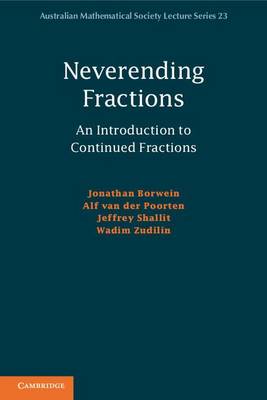Australian Mathematical Society Lecture
2 total works
The Mahler measure is a fascinating notion and an exciting topic in contemporary mathematics, interconnecting with subjects as diverse as number theory, analysis, arithmetic geometry, special functions and random walks. This friendly and concise introduction to the Mahler measure is a valuable resource for both graduate courses and self-study. It provides the reader with the necessary background material, before presenting the recent achievements and the remaining challenges in the field. The first part introduces the univariate Mahler measure and addresses Lehmer's question, and then discusses techniques of reducing multivariate measures to hypergeometric functions. The second part touches on the novelties of the subject, especially the relation with elliptic curves, modular forms and special values of L-functions. Finally, the Appendix presents the modern definition of motivic cohomology and regulator maps, as well as Deligne–Beilinson cohomology. The text includes many exercises to test comprehension and challenge readers of all abilities.
Neverending Fractions
by Jonathan M. Borwein, Alf van der Poorten, Jeffrey Shallit, and Wadim Zudilin
Published 3 July 2014
Despite their classical nature, continued fractions are a neverending research area, with a body of results accessible enough to suit a wide audience, from researchers to students and even amateur enthusiasts. Neverending Fractions brings these results together, offering fresh perspectives on a mature subject. Beginning with a standard introduction to continued fractions, the book covers a diverse range of topics, from elementary and metric properties, to quadratic irrationals, to more exotic topics such as folded continued fractions and Somos sequences. Along the way, the authors reveal some amazing applications of the theory to seemingly unrelated problems in number theory. Previously scattered throughout the literature, these applications are brought together in this volume for the first time. A wide variety of exercises guide readers through the material, which will be especially helpful to readers using the book for self-study, and the authors also provide many pointers to the literature.

